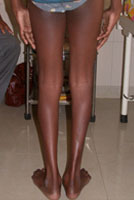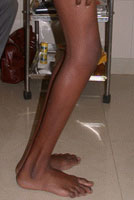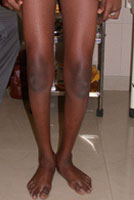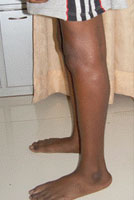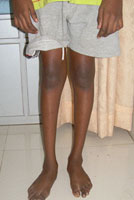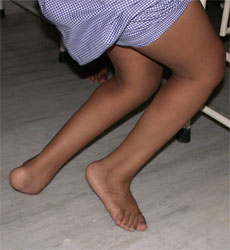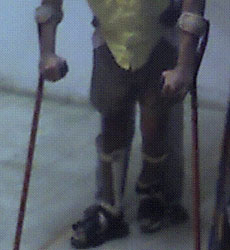Patient Information: Surgery of Cerebral Palsy
Single Event Multilevel Surgery (SEMLS) & Percutaneous Apneurotic Slide Surgery (PERCS)
Most children with Cerebral diplegia with develop muscle tightness and imbalance during period of rapid growth spurts. This can make standing and ambulation difficult. The muscle tightness and spasticity also consume energy leading to early fatigue and reluctance for the child to stand or walk.
Staged surgery and repeated plaster cast treatment cause muscle wasting and weakness.
The concept of SEMLS and PERCS were developed with the common goal to achieve the most optimal results with minimal immobilization.
The surgery is performed under regional anesthesia and post-operative rehabilitation commences as soon as the child is comfortable.
Percutaneous aponeurotic slide surgery (PERCS)
- This procedure is indicated for spastic muscles which interfere in positioning and posturing of limb.
- Involves minimal incisions and can be done at multiple sites.
- Orthotic support is required after PERCS and rarely plaster casts are required.
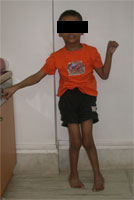 Seven year old boy with spastic diplegia
Seven year old boy with spastic diplegia 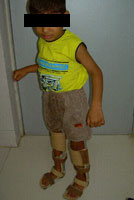 Six months post surgery - PERCS and standing with orthotics
Six months post surgery - PERCS and standing with orthotics
12 year old boy with typical crouch gait: hip and knee flexed with weak quadriceps
Post surgery: guarded hamstring lengthening, fractional psoas surgery and patella tendon plication
14 year old boy with severe crouch. After bilateral distal femoral extension deformity, patella tendon placation, foot surgery child ambulatory with crutches.
Crouch gait correction involves muscle rebalancing procedures and require dedicated post operative physiotherapy to achieve optimal results.
About Cerebral Palsy Surgery
Management of children with cerebral palsy need an integrated approach. A systematic assessment is carried out prior to surgery to identify the goals of SEMLS or PERCS for that particular child and to determine what is called the “Surgical Dose” required to achieve optimum results.
The surgery is planned after thorough discussion with the parents /caregivers and the treating physiotherapists so that the post operative rehabilitation protocol is tailored to the individual child. Appropriate orthotics are also fabricated so that plaster immobilization is minimal to prevent muscle disuse.
The child is also prescribed appropriate analgesics and muscle relaxants to ease the pain and spasm which can sometimes occur in the post-operative period.
Occasionally Botulinum toxin injections are combined with surgery to decrease the need for extensive muscle releases.
Please don’t hesitate to ask your doctor or physiotherapist whether SEMLS or PERCS is appropriate for your child.


